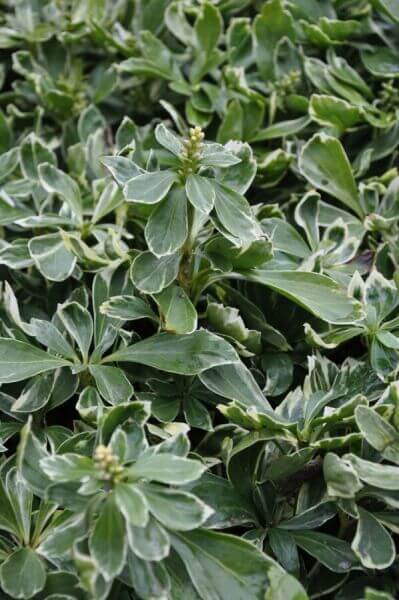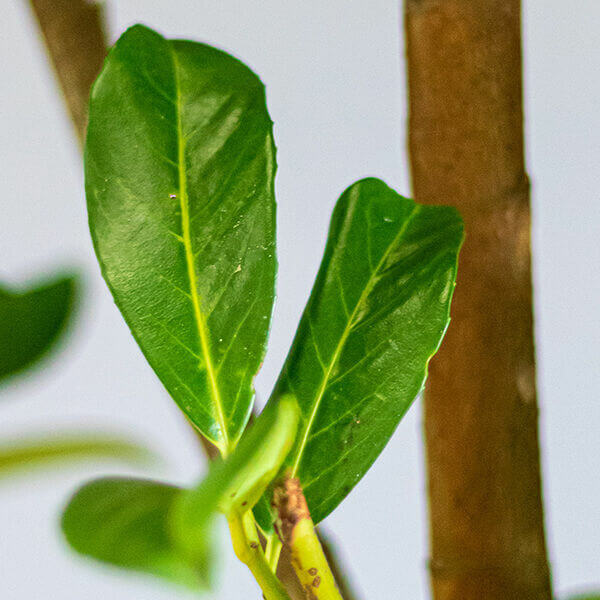Hedge Plants For Cottage Gardens
Boost your garden's attraction with rich hedge varieties such as Yew (Taxus), Thuja, Laurel, Photinia, and Bamboo, commemorated for their structural integrity and ecological benefits.
Yew and Thuja supply evergreen coverage and winter season resilience, while Laurel provides rapid growth and broad, aromatic leaves.
Photinia adds seasonal beauty with its vibrant red foliage, and Bamboo provides a low-maintenance, serene ambiance.
These hedges enhance air quality, reduce noise, and develop tranquil, private spaces.
Correct planting, spacing, and maintenance guarantee energetic development and environmental consistency.
Check out how these lush varieties can raise your garden's charm and wellness.
Key Takeaways
Transform Your Garden With Lush Hedge Ranges
- Select Yew for its thick, evergreen development and unrivaled longevity.
- Select Laurel for its quick development and broad leaves, ensuring quick privacy.
- Select Photinia for its lively seasonal foliage, which turns a striking dark red.
- Make use of Bamboo for a low-maintenance, winter-hardy hedge with visual appeal.
- Area plants 2-3 per meter and prune regularly for optimal growth and health.
Popular Hedge Plants
When transforming a garden with lush hedge varieties, it's necessary to think about popular hedge plants such as Yew, Thuja, Laurel, and Photinia due to their distinct qualities and advantages.
Yew (Taxus) is extremely esteemed for its durability and thick, green development, making it a prime option for withstanding landscapes.
Thuja is noted for its evergreen foliage and robust winter resilience.
Photinia adds seasonal vibrancy with red leaves that darken in time, producing dynamic visual appeal.
Laurel provides rapid growth and fragrant, broad leaves, perfect for fast personal privacy.
Furthermore, Bamboo is an outstanding choice for ambiance, using a low-maintenance, winter-hardy alternative that improves the garden's visual with its sophisticated, swaying walking sticks.
These selections cater to a variety of horticultural needs and choices.
Advantages of Garden Hedges
Garden hedges provide a multitude of advantages, making them an important addition to any landscape. These natural barriers are economical to implement and supply substantial wind security, boosting air flow and contributing to sound decrease. The dense foliage of hedges like Thuja and Beech makes sure privacy by blocking exposure, creating a serene and remote environment.
Hedges likewise play a crucial function in microclimate guideline, supplying a steady environment that promotes plant growth and reduces temperature level variations. Their complex leaf structures filter contaminants, improving air quality and contributing to a much healthier garden environment.
Furthermore, hedges excel in sound reduction, soaking up and deflecting sound waves to lower ambient sound levels. This dual performance of providing both acoustic and visual privacy improves the overall serenity and visual appeal of any garden.
Planting and Maintenance Tips
For a successful hedge, careful preparation of the planting area is crucial. Guarantee the soil has correct pH and drainage to support strong root advancement.
Area the plants appropriately for the selected types. Water the hedge frequently during its initial development stage, adjusting as required with seasonal modifications.
Implement a systematic insect control and illness avoidance strategy, using organic or chemical treatments when essential. Frequently check for aphids, mites, and fungal infections.
Apply mulch to retain moisture and reduce weeds. Seasonal pruning promotes thick development and air blood circulation, essential for plant health.
Following these guidelines will help you cultivate a dynamic, properly maintained hedge that boosts the appeal of your garden.
Spacing and Cutting Guidelines
Spacing and Trimming Guidelines
Proper spacing and trimming are essential for cultivating healthy, visually appealing hedges. Sufficient spacing guarantees each plant receives sufficient nutrients, light, and airflow.
Follow these standards for ideal hedge upkeep:
- Spacing: Position hedge plants 2-3 plants per meter to motivate robust growth.
- Pruning Methods: Regular pruning is essential for keeping preferred hedge height and shape. Trim brand-new development in summer season and cut down older wood during winter season.
- Seasonal Care: Change trimming approaches and schedules according to seasonal requirements to ensure plant health.
- Hedge Height: Frequently screen and trim to keep the preferred hedge height and accomplish consistent looks.
Following these actions will ensure your hedge flourishes, improving both the appeal and performance of your garden.
Selecting the Right Hedge
Picking the Right Hedge
Selecting the proper hedge involves assessing aspects such as mature height, foliage density, and ecological durability. Effective hedge plant selection requires comprehending each species' growth qualities and site-specific flexibility.
For example, Yew (Taxus) provides excellent longevity and thick development, while Thuja is notable for its winter season durability. Additionally, considering upkeep requirements is crucial; fast-growing species like Laurel or Privet demand regular cutting, whereas low-maintenance options like Bamboo or Ivy may be more effective for those seeking minimal maintenance.
Ecological aspects such as soil type, light schedule, and moisture conditions ought to also direct the choice procedure. This mindful technique makes sure the picked hedges will grow, supplying both practical and aesthetic benefits to the garden landscape.
Delivery and Planting Recommendations
To ensure your hedge plants flourish, they ought to be delivered by specialized couriers and planted without delay upon arrival.
Follow these necessary actions for effective planting:
- Soil Preparation: Enhance the soil with organic matter to improve drainage and nutrient material.
- Planting Depth: Develop a trench two times the width and equivalent to the depth of the root ball.
- Watering Methods: Water completely after planting, keeping the soil regularly damp but not filled.
- Mulching: Use a layer of mulch to keep moisture and suppress weeds.
Customer Assistance and Service
Provided the essential role of prompt assistance in horticultural pursuits, our customer assistance team is readily available 6 days a week through telephone, email, and social networks to provide expert recommendations and swiftly resolve any concerns. Their dedication to fast reaction times ensures client satisfaction by solving queries connected to plant health, optimal planting approaches, and maintenance schedules.

Schedule
Email
This extensive support group, enhanced by a stellar 9.3/ 10 client ranking, highlights our dedication to enhancing the gardening experience for every single customer.
Frequently Asked Questions
How Long Does It Take for Hedge Plants to Establish?
Hedge plants normally need one to 3 years to become completely developed, with the exact duration varying by types and growing conditions.
Effective care throughout this critical period is important for robust growth. Consistent watering, vigilant weed control, and suitable fertilizer application are pivotal in promoting strong root development.
For instance, fast-growing species like Laurel may develop quicker, while slower-growing varieties such as Yew might take longer. Thorough upkeep accelerates the establishment process, resulting in healthy and thick hedges.
What Are the very best Hedge Plants for Privacy?
The question of the very best hedge plants for personal privacy includes examining evergreen and deciduous choices.
Evergreen hedges like Thuja, Laurel, and Cypress offer year-round coverage, making sure continuous privacy.
In contrast, deciduous hedges such as Beech provide seasonal personal privacy, shedding leaves in cooler months.
Key maintenance suggestions for personal privacy hedges consist of routine cutting, fertilizing in spring, and correct spacing-- normally 2 to 3 plants per meter.
Additionally, consistent watering and diligent weed removal are crucial for promoting healthy, dense growth.
Can Hedge Plants Attract Wildlife to My Garden?
Yes, hedge plants can attract wildlife to your garden by providing essential benefits like shelter, food, and nesting websites, therefore boosting regional biodiversity. Yew, holly, and laurel are excellent for attracting birds, while ivy supports a range of pests.
Nevertheless, it's essential to note that there are some drawbacks, such as increased upkeep to handle pests and routine maintenance. Carefully picking and preserving hedge varieties can help stabilize these benefits and drawbacks, ultimately cultivating a sustainable and vibrant environment in your garden.
Are There Any Blooming Hedge Plants Available?
Yes, there are flowering hedge plants offered that can enhance the appeal of your garden.
For example, Elaeagnus, likewise called Olive Willow, produces fragrant white flowers in the fall, including a touch of elegance.
Photinia, another popular option, showcases vibrant red leaves that develop into a rich green, producing a dynamic visual impact throughout the seasons.
To ensure these plants prosper, it's vital to practice appropriate pruning methods and seasonal upkeep, such as trimming brand-new development in the summertime and cutting down in the winter.
These procedures will help preserve the health and visual appeal of your flowering hedges.
How Do I Prevent Bugs in My Hedge Plants?
To prevent insects in hedge plants, utilize natural bug control methods and preserve correct hedge care. Introduce useful pests like ladybugs, which prey on hazardous bugs, to develop a balanced ecosystem.
Routinely check your hedges for indications of infestation and immediately get rid of any afflicted parts to avoid the spread. Make sure the health of your hedges by using well balanced fertilizers and providing adequate water.
Utilize mulching to keep soil moisture and appropriate spacing to minimize plant tension and promote robust development. These practices jointly assist in minimizing pest issues and maintaining a healthy hedge.
Conclusion
In essence, choosing the right hedge varieties such as Yew, Thuja, and Laurel can change any garden into a serene sanctuary. These plants supply year-round plant, improve hedging plants aesthetic appeal, and offer practical advantages like sound decrease and wind security.
Appropriate planting techniques, accurate spacing, constant watering, and seasonal cutting are crucial for ideal development.
Trusted shipment services and professional customer assistance make sure a seamless experience from purchase to planting, making it simpler than ever to raise your outdoor space.
Garden hedges use a wide variety of benefits, making them a valuable addition to any landscape. These natural barriers are cost-effective to carry out and offer significant wind defense, improving air circulation and contributing to sound reduction. The dense foliage of hedges like Thuja and Beech makes sure personal privacy by obstructing presence, producing a serene and remote environment.

Pruning Methods: Routine pruning is vital for keeping preferred hedge height and shape. Trim new growth in summer and cut back older wood throughout winter season.